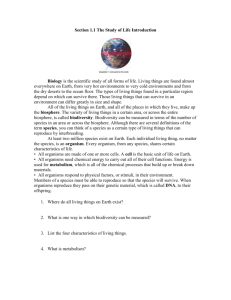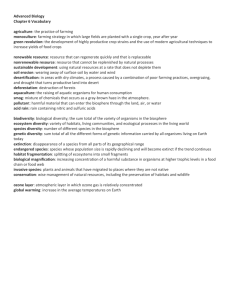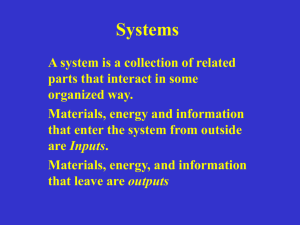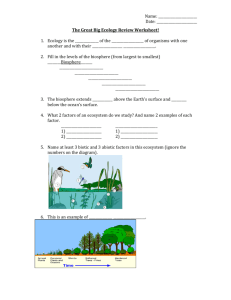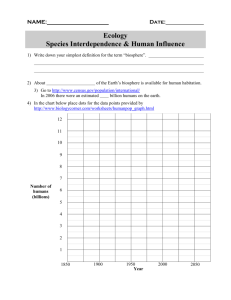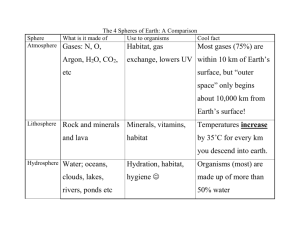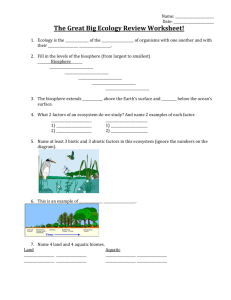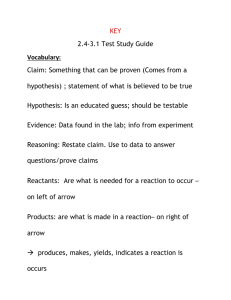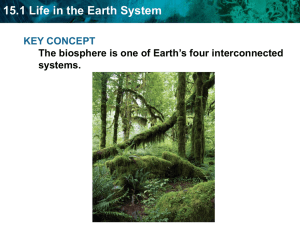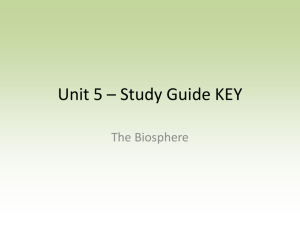Biobottle Project
advertisement
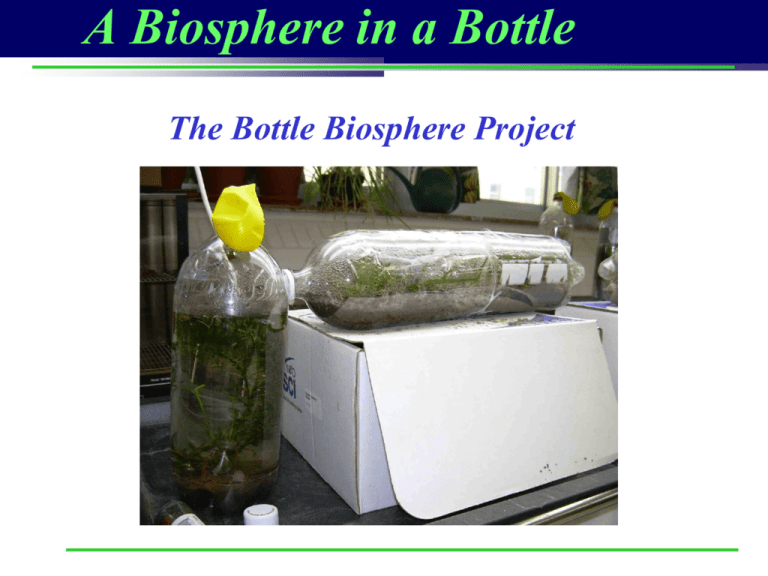
A Biosphere in a Bottle The Bottle Biosphere Project What is a BioBottle? A simplified ecosystem contained within a sealed, 23L soda bottle (“Closed Ecological System”) Can be terrestrial, aquatic or a combination A student-designed, synthesis activity illustrating an understanding of biogeochemical cycles, food chains & webs, and energy transfer The Assignment Each group of two students must seal a clear container so that no matter can enter or leave it. The Goal is to include a community of organisms that is planned to balance each other in their chemical needs and waste products and to provide an energy flow from the light that enters the container to all living things inside The test period will run for two weeks A formal, written report will be produced at the end of the experience consisting of: Plan Construction Methods Charts/Diagrams Observational Records Conclusion The PLAN Required prior to construction Must include: Type of container & method of sealing (hint: balloons make good lungs!) Type of environment (aquatic/terrestrial/combination) List of non-living components Water source Nutrients added Biotic components – must include at least one producer, consumer, and decomposer. Include numbers and source Most Important: Rationale for Success – discuss WHY you think you Bottle Biosphere will survive for two weeks once sealed. Discuss the needs of each organism and how those needs will be met. A labeled sketch is required at this stage and must be checked off before you may proceed to the Construction Phase Construction Note the date of construction & date each organism is added. Plants may be started prior to addition of animals & sealing Include as complete a list of organisms as possible, both macroscopic and microscopic Provide the source of each organism as a clue as to what other life forms may be “hitching a ride”. Also note if you rinsed the organisms prior to adding them to your biobottle Record the condition of all organisms in your biobottle Record the actual amount (mass, size or number) of each organism sealed into your biosphere Explain any modifications made from the original plan Describe you construction methods – how did you build the thing?! Include in the construction report anything else that you think is interesting as you build your system Charts & Diagrams Purpose: to illustrate how life may be able to survive in your biosphere Must have at least two charts/diagrams Energy Flow Chart – how light energy is converted to food energy and cycled through your biosphere Biogeochemical Cycle Chart – how materials found in living things cycle through the biotic and abiotic components of your biosphere Each diagram must be on unlined paper not less than 8.5x11 inches and not more than 18x24 inches All drafting and lettering should be neat and clearly readable Labeled, carefully drawn pictures of all organisms in your biosphere should be included in at least one of your diagrams Color is good! Observational Records Careful, detailed and dated observational records are essential in analyzing what is going on inside your biobottle and evaluating the success of your design Make your 1st observation prior to sealing the container and then a second immediately after sealing Thereafter, each member of the team will make a detailed observation every class day, or more often if you notice rapid changes within your biosphere Each observation should include a mention of each macroscopic organism and any changes in their quantity, size, condition and behavior Other items to observe include the appearance of the water, soil, sediment and the sides of the biosphere Conclusion So what happened and what have you learned?? First Part - a survey of what organisms are still alive, in what quantities, and in what condition Second Part - an explanation of facts that you learned from keeping a record of observations Third Part – improvements and changes. How would you re-design your experiment a second time? What new information would you seek to gather? Give a reason for each change. Advanced Design Construction of a multi-bottle Biosphere Using multiple bottles to connect 2-3 biomes Aquatic & Terrestrial Wicks and screens Sealing issues Common Issues, Rules, and Questions 1. Keep it simple!! 2. No mammals, birds or poisonous organisms 3. Remember the 10% rule 4. Lots of decomposers in soil, but aquatics need natural sediments or gravel from a working fish tank 5. No “colonial” organisms (ants, bees, termites, etc) Common Issues, Rules, and Questions (cont.) 6. What do plants do at night?? 7. Be sure to leave some room in your bottle for an “atmosphere” 8. What will be the relative humidity in your bottle? Are your organisms adapted to that? 9. Where can you get your organisms? a) b) c) d) pet stores bait shops self-collected plant nurseries Common Issues, Rules, and Questions (cont.) 10. Do I fail if my bottle crashes? 11. Do I have to open up my bottle at the end? 12. What do I do with everything when the experiment is over? 13. Can I take my bottle on the bus? 14. Other questions?? What works well in a Bottle Biosphere? Students do the research!! Aquatics: anacharis/elodea Indian waterweed (Hygrophila polysperma) seed snails (often on the anacharis) zebra danios common guppies betas a variety of algae-eaters with good growth of algae in bottle or anacharis critical – gravel from working fishtank or substrate from a natural source! Warning!! Many aquaria plants are non-native invasives. NEVER dispose of these plants (or any store-bought organisms) into the environment. What works well in a Bottle Biosphere? Terrestrial: grasses dichondra & other ground covers the “leafier” the plants, the better! isopods (roly-poly/pill bug) large variety of self-collected insects crickets (must catch them if they escape. Do not want my room “chirps” for months ;-) worms (must have good drainage!) Remember 10% rule (avoid 3rd trophic level) Warning: High humidity level inside biobottles – crickets mold and moths stick to the sides! BioBottle Equipment Construction Equipment: box cutters heavy-duty, clear box tape aquarium silicone sealant (primarily for multi-bottle set-ups) small fishnets plastic funnels with wide openings (for adding fish, etc to the bottles!) extra balloons/caps permanent markers Lighting Indirect sunlight Fluorescent Set-Up & Timers
